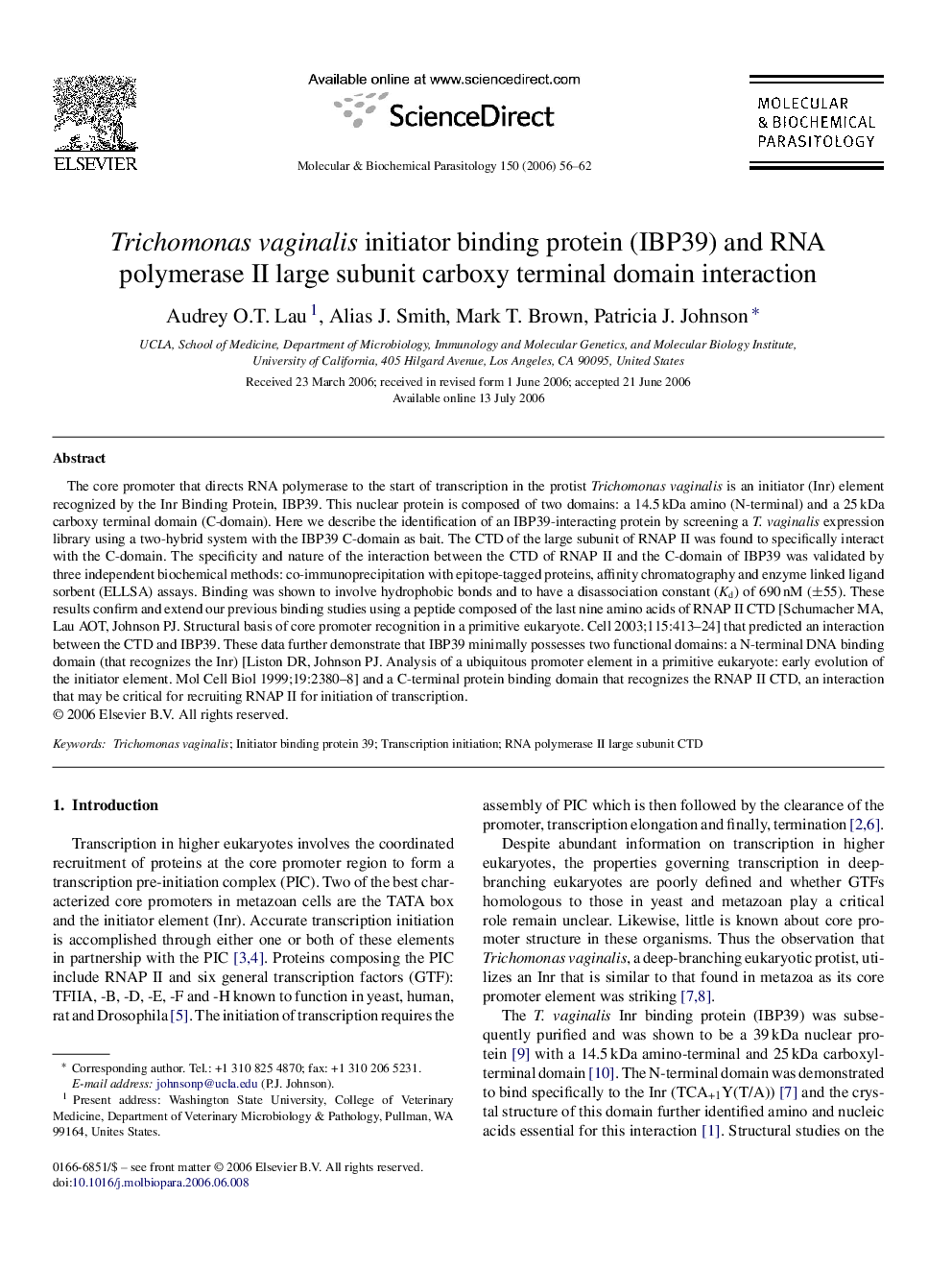| Article ID | Journal | Published Year | Pages | File Type |
|---|---|---|---|---|
| 2830310 | Molecular and Biochemical Parasitology | 2006 | 7 Pages |
The core promoter that directs RNA polymerase to the start of transcription in the protist Trichomonas vaginalis is an initiator (Inr) element recognized by the Inr Binding Protein, IBP39. This nuclear protein is composed of two domains: a 14.5 kDa amino (N-terminal) and a 25 kDa carboxy terminal domain (C-domain). Here we describe the identification of an IBP39-interacting protein by screening a T. vaginalis expression library using a two-hybrid system with the IBP39 C-domain as bait. The CTD of the large subunit of RNAP II was found to specifically interact with the C-domain. The specificity and nature of the interaction between the CTD of RNAP II and the C-domain of IBP39 was validated by three independent biochemical methods: co-immunoprecipitation with epitope-tagged proteins, affinity chromatography and enzyme linked ligand sorbent (ELLSA) assays. Binding was shown to involve hydrophobic bonds and to have a disassociation constant (Kd) of 690 nM (±55). These results confirm and extend our previous binding studies using a peptide composed of the last nine amino acids of RNAP II CTD [Schumacher MA, Lau AOT, Johnson PJ. Structural basis of core promoter recognition in a primitive eukaryote. Cell 2003;115:413–24] that predicted an interaction between the CTD and IBP39. These data further demonstrate that IBP39 minimally possesses two functional domains: a N-terminal DNA binding domain (that recognizes the Inr) [Liston DR, Johnson PJ. Analysis of a ubiquitous promoter element in a primitive eukaryote: early evolution of the initiator element. Mol Cell Biol 1999;19:2380–8] and a C-terminal protein binding domain that recognizes the RNAP II CTD, an interaction that may be critical for recruiting RNAP II for initiation of transcription.
